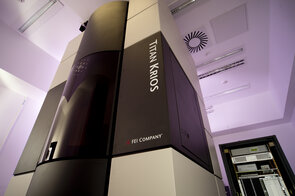
Profile
The positions in the table below reflect the The University of Queensland (UQ)'s position overall, domestically, within their sector, and in various subject areas based on their Share. Each position links to the corresponding table where The University of Queensland (UQ) is listed.
Position by research output Share
Position by research output Share in subject areas
Research
Overall research output
| Count | Share | |
|---|---|---|
| Overall | 565 | 151.12 |
Overall Count and Share for 'The University of Queensland (UQ)' based on the 12-month time frame mentioned above.
Research outputs by subject area
| Subject | Count | Share |
|---|---|---|
| Biological sciences | 211 | 64.59 |
| Chemistry | 132 | 35.94 |
| Earth & environmental sciences | 84 | 27.34 |
| Health sciences | 134 | 22.22 |
| Physical sciences | 119 | 27.06 |
Note: Articles may be assigned to more than one subject area, as a result the sum of the subject research outputs may not equal the overall research outputs.
Note: Hover over the donut graph to view the Share for each subject.
Share output for the past 5 years
Nature Strategy Reports
Identify research insights to guide research strategy and grow your impact with our Nature Strategy reports.
-
Actionable insights into research performance.
-
Detailed analysis of strengths and weaknesses.
-
Covers all major disciplines and regions of the world.

Explore the topics behind the 75,000 papers in the Nature Index 2024 Research Leaders
Collaboration
International vs domestic collaboration by Share
| Type | Percentage |
|---|---|
| International (2015 institutions) | 67.1% |
| Domestic (222 institutions) | 32.9% |
Note: Hover over the graph to view the percentage of collaboration.
Top 5 domestic collaborators with The University of Queensland (UQ) by Share
Collaborating institutions
Share
Top 5 international collaborators with The University of Queensland (UQ) by Share
Collaborating institutions
Share
Job finder
-
HDR Scholarships for International Research Training Group (IRTG)
The University of Queensland Brisbane (LGA), South East Queensland (AU)
View more job listings on Nature Careers.
Latest supplement
Relationships
Affiliated joint institutions and consortia
- ANZgene
- ARC Centre for Complex Systems (ACCS)
- ARC Centre of Excellence for All-sky Astrophysics (CAASTRO)
- ARC Centre of Excellence for Children and Families over the Life Course
- ARC Centre of Excellence for Coral Reef Studies
- ARC Centre of Excellence for Design in Light Metals
- ARC Centre of Excellence for Enabling Eco-Efficient Beneficiation of Minerals
- ARC Centre of Excellence for Engineered Quantum Systems (EQuS)
- ARC Centre of Excellence for Environmental Decisions (CEED)
- ARC Centre of Excellence for Functional Nanomaterials
- ARC Centre of Excellence for Green Electrochemical Transformation of Carbon Dioxide (GETCO2)
- ARC Centre of Excellence for Innovations in Peptide and Protein Science (CIPPS)
- ARC Centre of Excellence for Integrative Brain Function (CIBF)
- ARC Centre of Excellence for Integrative Legume Research (CILR)
- ARC Centre of Excellence for Mathematical and Statistical Frontiers of Big Data, Big Models, New Insights (ACEMS)
- ARC Centre of Excellence for Mathematics and Statistics of Complex Systems (MASCOS)
- ARC Centre of Excellence for Plant Success in Nature and Agriculture
- ARC Centre of Excellence for Quantum Computation and Communication Technology (CQC²T)
- ARC Centre of Excellence for Quantum-Atom Optics (ACQAO)
- ARC Centre of Excellence for Translational Photosynthesis (CoETP)
- ARC Centre of Excellence for the Dynamics of Language
- ARC Centre of Excellence for the History of Emotions (CHE)
- ARC Centre of Excellence in Advanced Molecular Imaging
- ARC Centre of Excellence in Bioinformatics (ACB)
- ARC Centre of Excellence in Convergent Bio-Nano Science and Technology
- ARC Centre of Excellence in Future Low-Energy Electronics Technologies (FLEET)
- ARC Centre of Excellence in Ore Deposits (CODES)
- ARC Centre of Excellence in Plant Cell Walls
- ARC Centre of Excellence in Structural and Functional Microbial Genomics
- ARC Centre of Excellence in Synthetic Biology
- ARC Centre of Excellence in Vision Science (ACEVS)
- AuScope Limited
- Australian Centre for Plant Functional Genomics (ACPFG)
- Australian Genome Research Facility (AGRF)
- Australian Infectious Diseases Research Centre (AID)
- Australian National Fabrication Facility (ANFF)
- Australian and New Zealand International Ocean Discovery Program Consortium (ANZIC)
- Australo-Anglo-American Spondylitis Consortium (TASC)
- Centre for Children’s Health Research (CCHR)
- Centre for Youth Substance Abuse Research's (CYSAR's)
- Centro de Recursos Hídricos para la Agricultura y la Minería (CRHIAM)
- Cooperative Research Centre for Water Sensitive Cities (CRCWSC)
- Dermatology Research Centre
- Expedition 318 Scientists
- Functional Annotation of the Mammalian Genome (FANTOM)
- Genetic Factors for Osteoporosis (GEFOS) Consortium
- Health Translation Queensland
- ICGC Breast Cancer Project: Triple Negative/Lobular/Other
- International Genetics of Ankylosing Spondylitis (IGAS) Consortium
- International WaterCentre (IWC)
- JLU-UQ Joint Research Center for Future Materials
- JST-ERATO Yamauchi Materials Space-Tectonics Project
- Joint Remote Sensing Research Program (JRSRP)
- Kathleen Cuningham Foundation Consortium for Research into Familial Breast Cancer (kConFab)
- Mater Research Institute - University of Queensland (MRI-UQ)
- NERP Environmental Decisions Group (EDG)
- NOAA-ARC Linkage Grant project
- NUS Synthetic Biology Research Consortium
- National Centre for Groundwater Research and Training (NCGRT)
- National Environmental Science Programme (NESP)
- National Imaging Facility (NIF)
- Psychiatric Genomics Consortium (PGC)
- Queensland Children's Medical Research Institute (QCMRI)
- Queensland Cyber Infrastructure Foundation (QCIF)
- Queensland Facility for Advanced Bioinformatics (QFAB)
- Queensland Tropical Health Alliance (QTHA)
- SUSTech-UQ Joint Center for Neuroscience and Neural Engineering
- Stem Cells Australia
- Terrestrial Ecosystem Research Network (TERN)
- The Lundbeck Foundation Initiative for Integrative Psychiatric Research (iPSYCH)
- Translational Research Institute (TRI)
- Tribolium Genome Sequencing Consortium
- UQ-JLU Joint Research Centre for Future Materials
- UQ-Ochsner Clinical School


